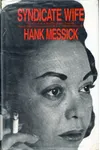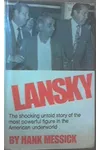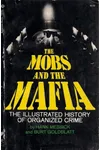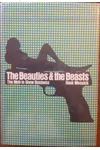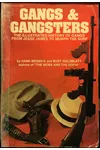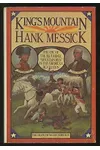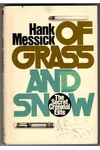Picture a fearless journalist diving headfirst into the shadowy world of mobsters and corruption—meet Hank Messick! Born in 1922 in Happy Valley, North Carolina, Messick became a titan of investigative journalism and true crime writing, exposing organized crime with a pen mightier than a tommy gun. His 19 books, including the explosive Lansky and The Silent Syndicate, peeled back the curtain on America’s underworld, making him a legend despite threats, bribes, and even blindness in his later years.
Messick’s knack for uncovering gritty truths wasn’t just a job—it was a crusade. From small-town newspapers to major dailies, he chased conspiracies with a relentless spirit, leaving an indelible mark on journalism and crime literature. Ready to step into his world of danger and intrigue?
The Making of Hank Messick
Born on August 14, 1922, in the rural embrace of Happy Valley, North Carolina, Henry 'Hank' Messick grew up with a storyteller’s curiosity and a rebel’s heart. After earning a master’s degree from the University of Iowa, he briefly taught journalism at Colorado A&M College but craved real-world action. Trading lecture halls for newsrooms, he cut his teeth at The Waynesville Mountaineer, a North Carolina weekly, before joining bigger papers like the Raleigh Times. His early exposés, including a loan shark racket that landed him on TV’s The Big Story, hinted at the fearless career to come.
Messick’s big break came at the Louisville Courier-Journal (1957–1963), where he tackled illegal gambling in Newport, Kentucky, and later at the Miami Herald (1963–1966), where his probes into police corruption led to sheriff indictments. These high-stakes investigations shaped his gritty, truth-driven style, setting the stage for his literary leap.
Hank Messick’s Unforgettable Stories
Messick’s books are like a front-row seat to the mob’s dark theater. His debut, The Silent Syndicate (1967), traced the rise of Cleveland gangsters from Prohibition to power, blending meticulous research with a journalist’s knack for narrative. It was a bold opener that established him as a crime-writing heavyweight. Then came Lansky (1971), his most famous work, a biography of mob financier Meyer Lansky that painted him as a financial genius with a disputed $300 million fortune. The book stirred controversy but cemented Messick’s reputation for fearless storytelling.
Other gems include Syndicate in the Sun, which exposed South Florida’s corrupt underbelly, and The Mobs and the Mafia (1974), an illustrated history of organized crime’s evolution. Messick’s style—direct, unflinching, and packed with insider details—made complex criminal networks accessible and thrilling. He didn’t just report; he wove tales of cops, crooks, and conspiracies that read like noir novels, often at great personal risk, facing bribes, threats, and even an assault by a corrupt cop.
His final book, Razzle Dazzle (1995), was a testament to his grit. Despite losing most of his sight to Sjogren’s syndrome, Messick dictated this vivid account of Newport’s gambling rings from memory, proving his passion for truth was unstoppable. Each work reflected his belief that crime was an extension of America’s free enterprise, a theme that resonated across his oeuvre.
Why Hank Messick Matters
Hank Messick didn’t just write about organized crime—he reshaped how we understand it. His books lifted the veil on the mob’s inner workings, influencing true crime writers and journalists alike. His courage in the face of danger, from mob threats to a CIA file tracking his work, inspired a generation to pursue truth over safety. Messick’s legacy lies in his ability to humanize the chaos of crime while exposing its systemic roots, making him a pioneer in investigative storytelling.
Even after his death in 1999 in Cocoa, Florida, Messick’s stories continue to captivate, offering a window into a bygone era of gangsters and grit. His work remains a beacon for anyone fascinated by the intersection of power, corruption, and justice.
- Born: August 14, 1922, Happy Valley, North Carolina
- Died: November 6, 1999, Cocoa, Florida
- Key Works: The Silent Syndicate, Lansky, The Mobs and the Mafia, Razzle Dazzle
- Notable: Faced threats, bribes, and blindness while exposing crime
Snag Lansky or The Silent Syndicate and dive into Hank Messick’s thrilling world of true crime! His tales of mobsters and mayhem are as gripping today as ever.
